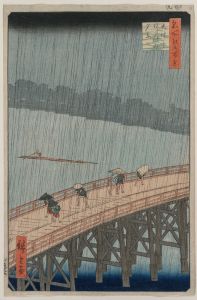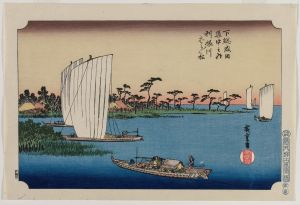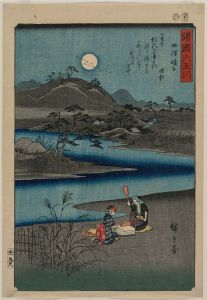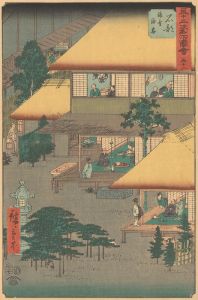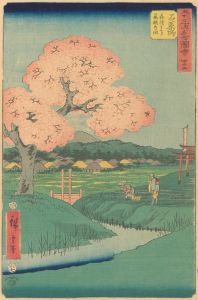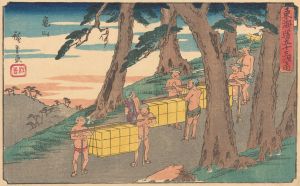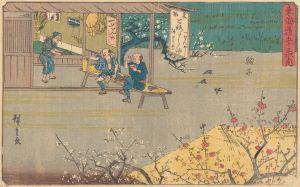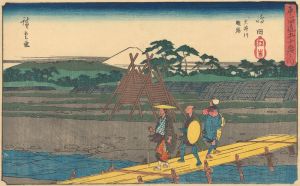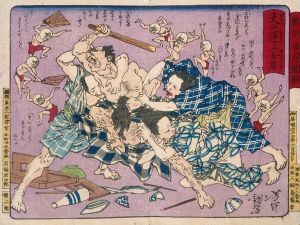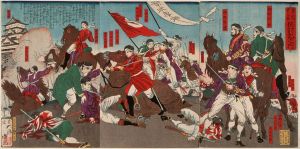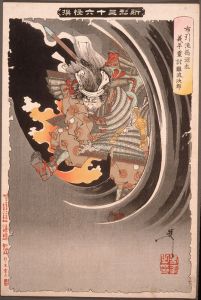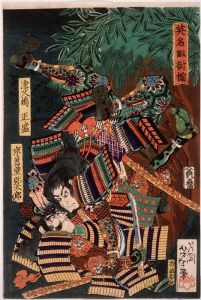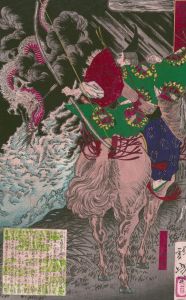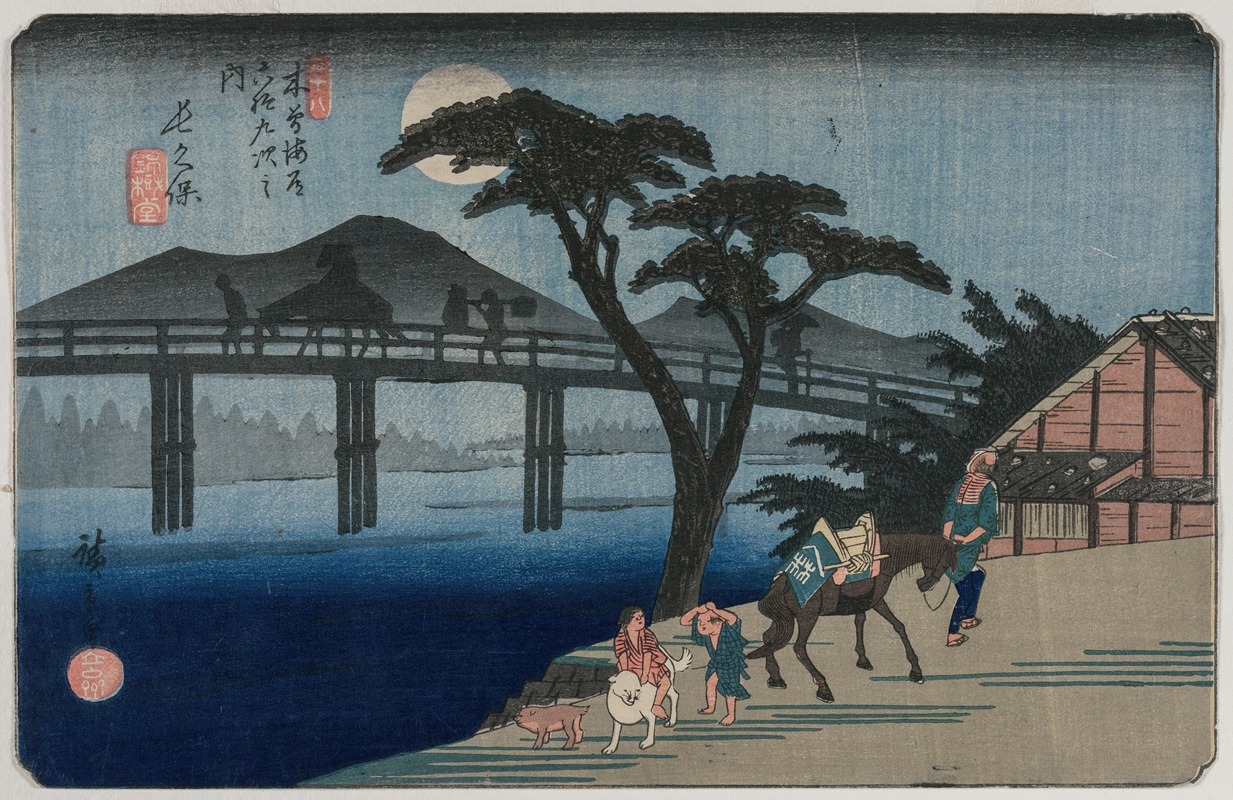
Nagakubo from the series Sixty-Nine Stations of the Kisokaido
A hand-painted replica of Andō Hiroshige’s masterpiece Nagakubo from the series Sixty-Nine Stations of the Kisokaido, meticulously crafted by professional artists to capture the true essence of the original. Each piece is created with museum-quality canvas and rare mineral pigments, carefully painted by experienced artists with delicate brushstrokes and rich, layered colors to perfectly recreate the texture of the original artwork. Unlike machine-printed reproductions, this hand-painted version brings the painting to life, infused with the artist’s emotions and skill in every stroke. Whether for personal collection or home decoration, it instantly elevates the artistic atmosphere of any space.
Andō Hiroshige, a renowned Japanese ukiyo-e artist of the Edo period, is celebrated for his landscape prints and his ability to capture the essence of Japanese scenery. One of his notable series is the "Sixty-Nine Stations of the Kisokaidō," which depicts the post stations along the Kisokaidō, a historic route connecting Edo (modern-day Tokyo) and Kyoto. This series, created in collaboration with fellow artist Keisai Eisen, showcases the diverse landscapes and cultural significance of these stations.
The print "Nagakubo" is one of the works from this series. Nagakubo was the twenty-seventh station on the Kisokaidō, located in present-day Nagano Prefecture. This station was an important rest stop for travelers journeying between Edo and Kyoto. Hiroshige's depiction of Nagakubo captures the tranquil beauty and the serene atmosphere of the area, which was known for its picturesque landscapes.
In this print, Hiroshige employs his characteristic use of perspective and color to convey the natural beauty of Nagakubo. The composition typically features a harmonious blend of natural elements, such as mountains, rivers, and trees, which are common themes in Hiroshige's work. His ability to depict the changing seasons and weather conditions adds a dynamic quality to the scene, inviting viewers to experience the journey along the Kisokaidō.
Hiroshige's work is distinguished by its attention to detail and the use of vibrant colors, achieved through the woodblock printing technique. This method involves carving the image into a wooden block, applying ink, and pressing it onto paper. The process allows for the production of multiple copies, making ukiyo-e prints accessible to a wide audience during the Edo period.
The "Sixty-Nine Stations of the Kisokaidō" series, including the "Nagakubo" print, reflects the cultural and historical significance of the Kisokaidō route. It served not only as a means of transportation but also as a conduit for cultural exchange and economic activity. Hiroshige's prints provide a visual record of the landscapes and daily life along this important road, offering insights into the travel and commerce of the time.
Hiroshige's influence extends beyond Japan, as his work significantly impacted Western artists, particularly during the Japonisme movement in the late 19th century. Artists such as Vincent van Gogh and Claude Monet admired Hiroshige's compositions and use of color, which contributed to the development of Impressionism.
In summary, Andō Hiroshige's "Nagakubo" from the "Sixty-Nine Stations of the Kisokaidō" series is a testament to his skill in capturing the beauty and essence of Japan's landscapes. Through his meticulous woodblock printing technique, Hiroshige not only documented the scenic views of the Kisokaidō but also left a lasting legacy that continues to inspire artists and art enthusiasts worldwide.





